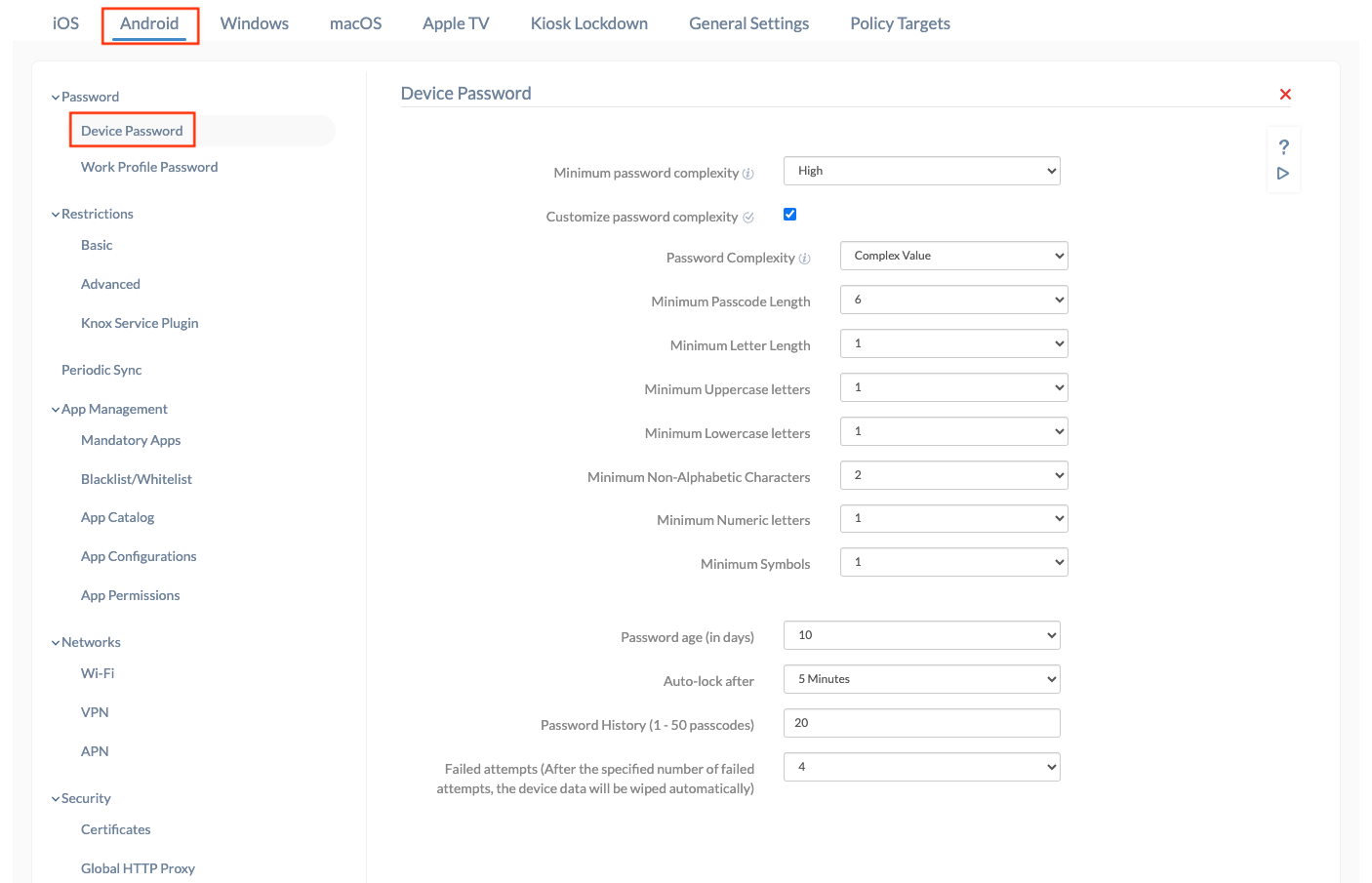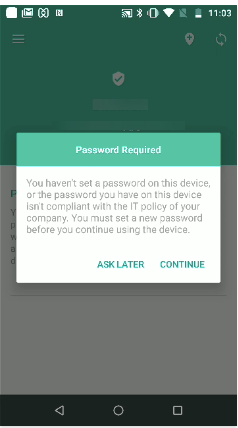Category filter
Password policy for Android devices
A password policy enforces mandated password rules for the users to set passwords on their devices. Hexnode’s UEM solution offers a wide range of parameters to configure a password policy for Android devices. Thus, by enforcing a strong password policy, administrators can ensure that their users abide by the enforced password rules and generate stronger passwords on their devices. Organizations can make sure that any devices that fail to meet the applied password policy requirements will be marked as non-compliant on the UEM console.
Configure password policy for Android devices via UEM
To set up a password policy,
- Log in to your Hexnode portal.
- Go to Policies.
- Select an existing policy or create a new one by clicking New Policy.
- From Android > Password > select Device Password and click Configure.
You’ll have the following options to be configured.
| Policy | Description |
|---|---|
| Minimum password complexity | Select the minimum password complexity level for devices running Android 12 and above. It can take Low, Medium, or High levels.
|
| Customize password complexity | Select the minimum password complexity level for devices running Android 7.0 through Android 11.0.
|
| Password age (in days) | The number of days after which the password will expire. The available values are 10, 20, 50, 70, 120, 250, 360, 470, 600, 720. The users need to renew the password before the specified password age. Upon password expiry, the users would have to add a new password. |
| Auto-lock after | Set the amount of idle time before the device is locked automatically. The available values are never, 1 minute, 2 minutes, 3 minutes, 4 minutes, 5 minutes, 10 minutes, 15 minutes. By default, the auto-lock option will be disabled. |
| Password History (1-50 passcodes) | Blocks the users from re-using the password for the specific number of times. You can choose a value in the range 1 and 50. Password history is turned off by default. For instance, the password history is set as 5 and the current password is, say Abcd123!. If the user changes this password, they cannot use this password for the next 5 times. |
| Failed attempts | Hexnode UEM will reset the device to factory settings if the user enters an incorrect password more than the specified number of attempts. The number of attempts can be 4, 5, 6, 7, 8, 9 or 10. |
Associate policies with devices
If the policy has not yet been saved,
- Navigate to Policy Targets.
- Click on +Add Devices.
- Select the devices and click OK.
- Click on Save to apply the policies to devices.
Apart from devices, you can also associate the policies with device groups, users, user groups, or domains from Policy Targets.
If the policy has been saved, you can associate it with another method.
- From Policies, check the policies to be associated.
- Click on Manage > Associate Targets and select the device.
- Click on Associate to apply the policy to the devices.
What happens at the device end?
Once the password policy is associated with the device, Hexnode notifies the user if the device has no password or if the set device password is not compliant with the organization’s rules. Clicking on “CONTINUE” will take the user to the page to set up the device password. If the user chooses the option, “ASK LATER,” the prompt will disappear momentarily and reappear after some time.






